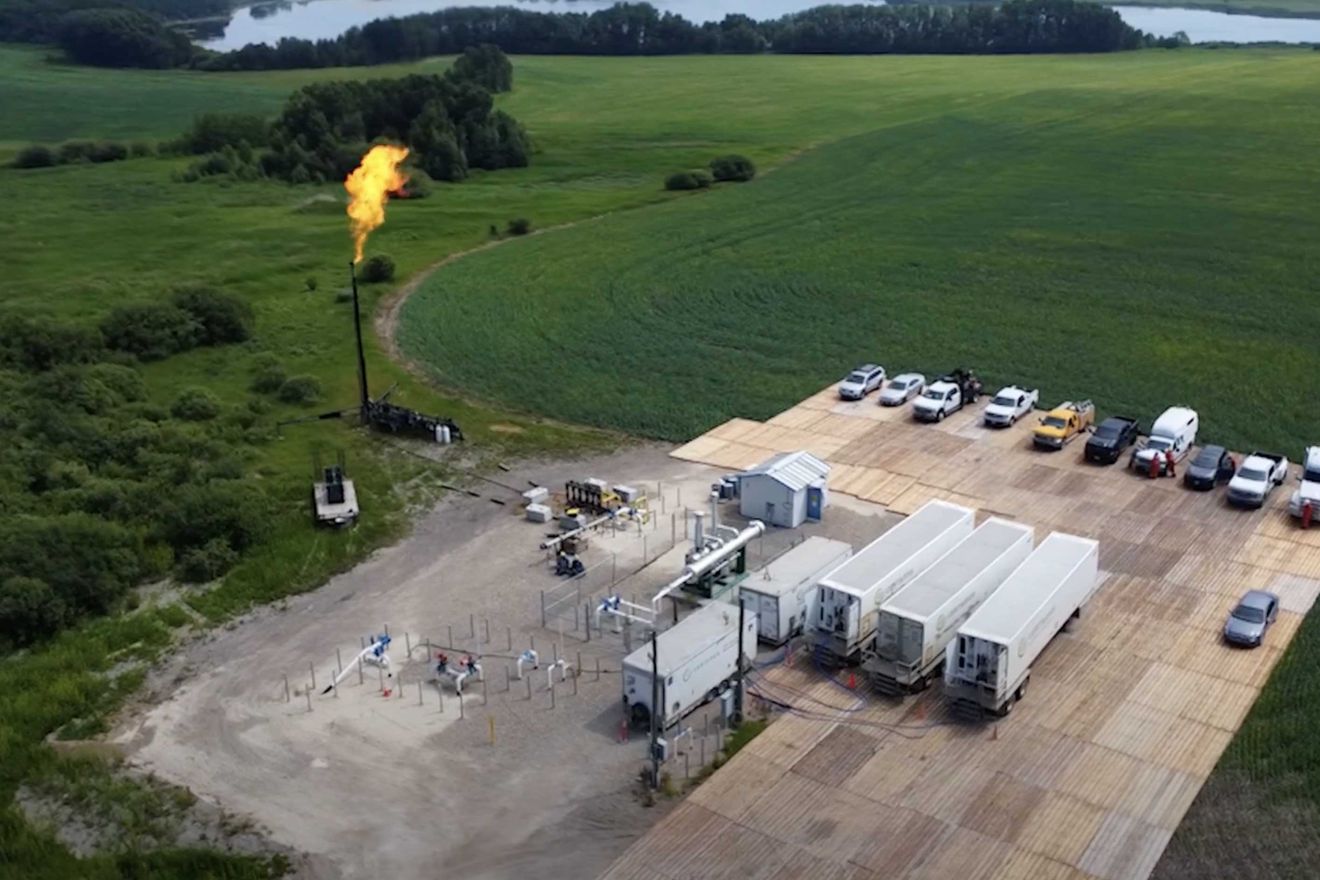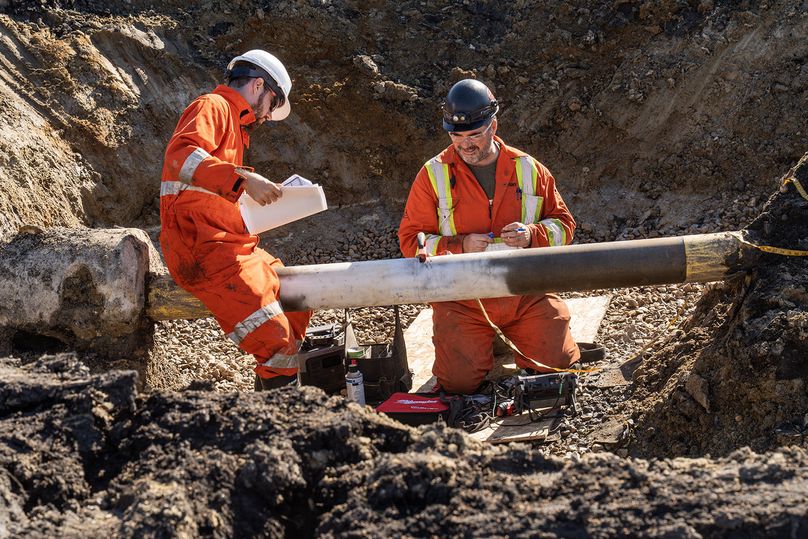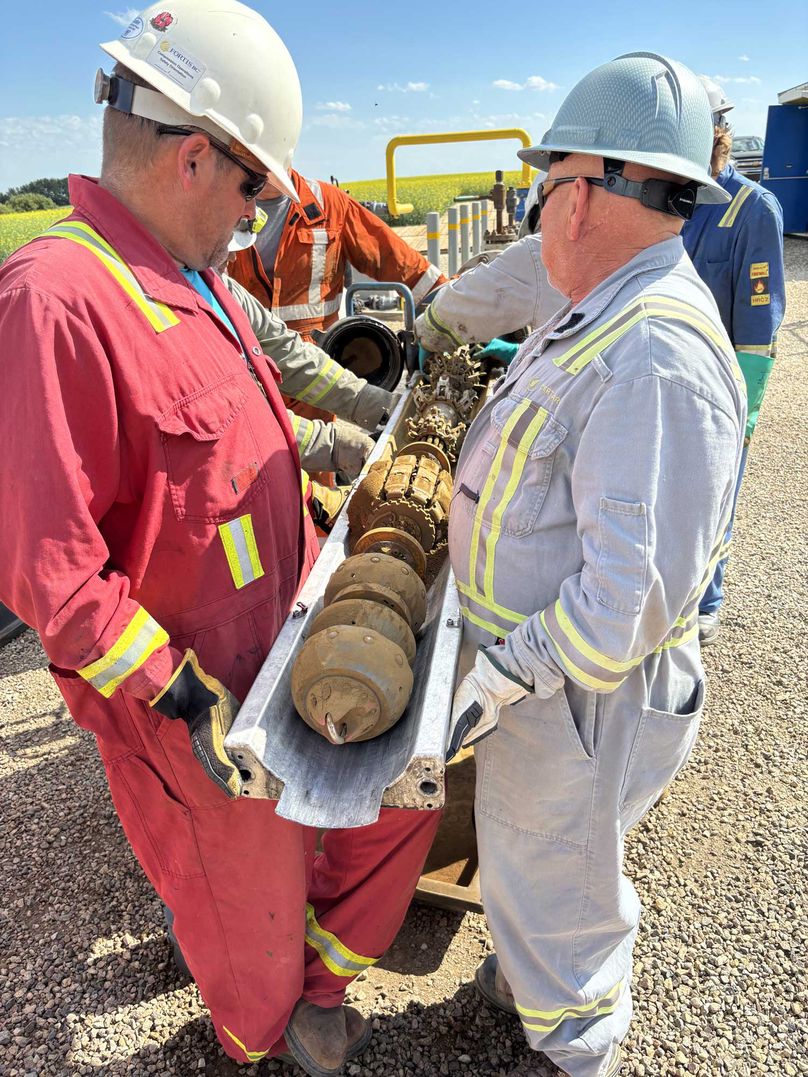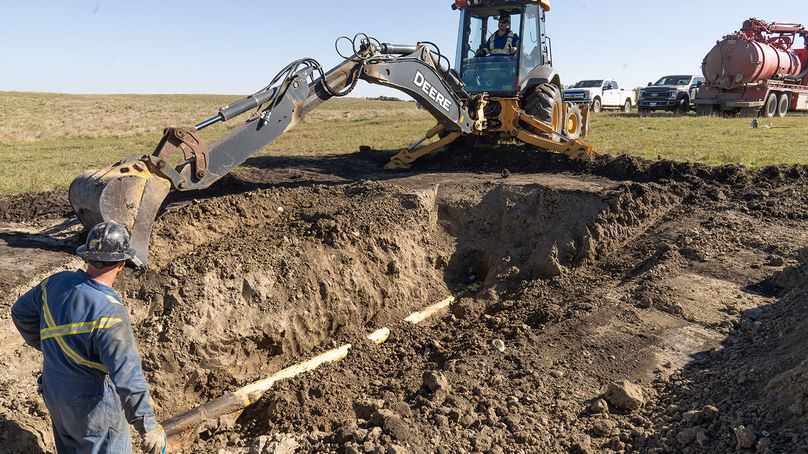When it comes to our natural gas network in Manitoba, there are more than 11,000 kilometres of gas main lines. Aside from above-ground station and control facilities, mains are exclusively underground.
That includes our highest-pressure transmission pipelines, consisting of approximately 2,000 kilometres of steel pipe across Southern Manitoba. As the weather gets colder outside and customers use more natural gas to heat their homes and businesses, the pressure on those lines increases.

Maintaining Canada's Aging Natural Gas Pipelines | Inline Inspection Explained
Join Manitoba Hydro’s Patrick Lagasse, Senior Gas Integrity Engineer, as he walks us through the critical work of maintaining aging natural gas infrastructure in Manitoba.
Video: 1:45
“In the winter there is clearly a higher demand on the natural gas system,” said Patrick Lagassé, Senior Gas Integrity Engineer with Manitoba Hydro’s Gas Engineering and Construction Department. “To meet that increased demand for natural gas, the pressure and natural gas flow is increased, which puts more stress especially on those steel transmission pipes.”

Patrick Lagassé and a contractor inspect a line near Russell, MB.
Enlarge image: Two men sit in a trench, examining an exposed underground gas pipe.
To ensure the safe performance and reliability of this critical infrastructure, we conduct inspections and maintenance of our gas mains.
So how can we best inspect our major gas line infrastructure when most of it is buried deep underground? Enter the smart pig, a sophisticated device that can be inserted into natural gas pipelines. The device identifies and reports areas that require further inspection and maintenance by our crews and contractors.
The smart pig inspections can be carried out on active gas pipes, minimizing disruptions for our customers.

Contractors removing a smart pig from a pipeline receiver after a completed inspection.
Enlarge image: Two workers load a large robotic drill device into a pipe opening.
“The inline inspection tool (smart pig) is designed to detect primarily metal loss features and geometric features present on the steel pipe,” Lagassé said. “Metal loss normally comes from corrosion or manufacturing imperfections. Corrosion will naturally grow over time and is important to monitor it over time and remediate it when it becomes severe. Geometric features are mainly dents, which are heightened points of stress. Soil conditions in certain parts of the province can be quite rocky, which tends to cause dents to form, especially in areas where the land is well cultivated and heavy equipment travels over the soil and pipe.”
The smart pig measurements are used to generate a detailed report that lists imperfections/features along an extended section of pipe; areas of concern are excavated for further inspection and repairs are performed as needed.
“Our Gas Integrity group has responsibilities across the entire natural gas system, whether that’s buried pipe, station facilities, services, you name it,” Patrick said. “The work we do is an important part of maintaining our natural gas assets.”
And that ultimately improves natural gas reliability for our customers.
Click before you dig
To help us keep natural gas flowing reliably for Manitobans, always remember to Click Before You Dig — the first step in planning any landscaping, yard work or construction activities on your property that require digging, drilling or other groundbreaking. “With natural gas pipelines being buried, it’s important for landowners, whether it’s at excavation locations or not, that they be aware that the pipe is there,” Patrick said. “For example, many underground pipe locations are within agricultural areas. And it’s very important before work is done near the pipeline that could present a risk, that the work be communicated to Manitoba Hydro through Click Before You Dig.”
Find out more about how and why to use Click Before You Dig.




